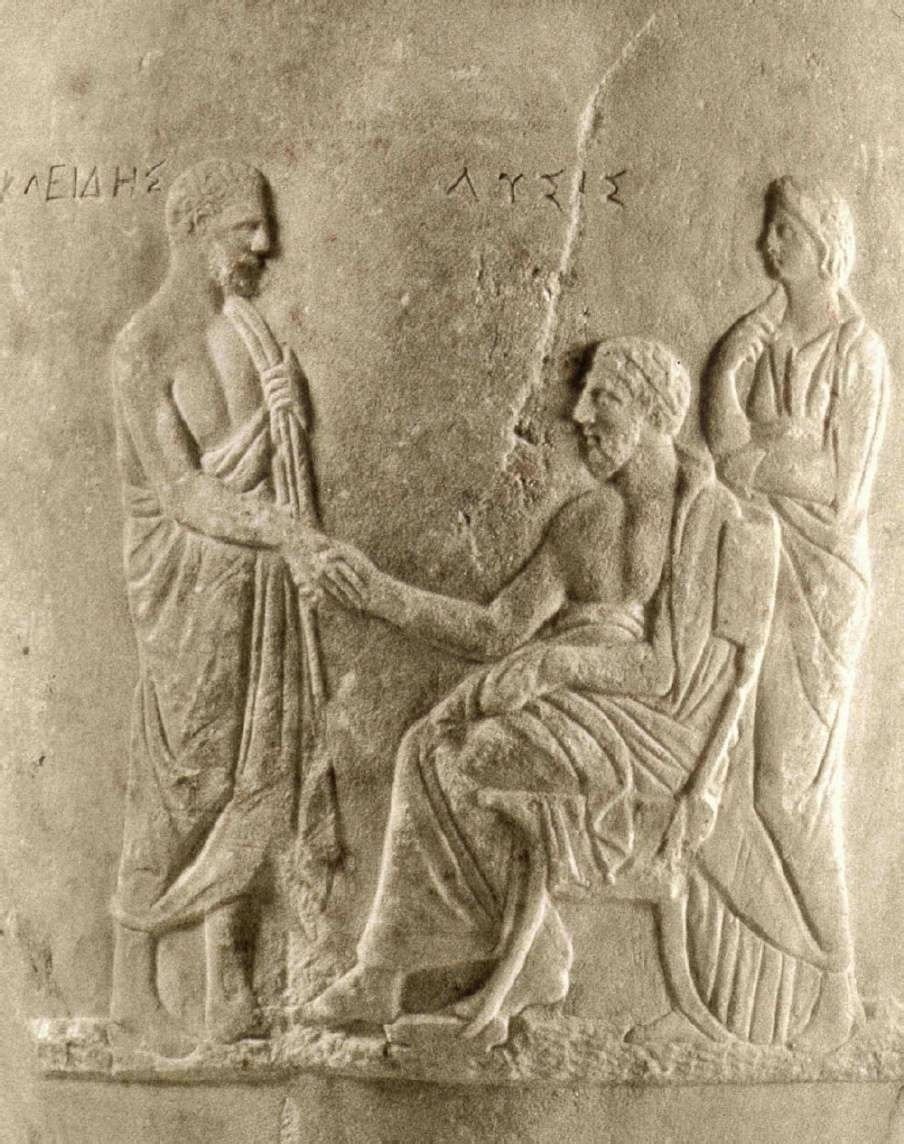Handshaking is just one of many forms of greeting that have been used throughout history and across cultures. Handshaking, as a form of greeting, has evolved and spread across the globe in various ways. Although the ancient Greeks played a role in popularizing the handshake, many other factors have contributed to its widespread adoption as well.
The origin of handshaking is not precisely known, but it is believed to date back to at least the 5th century BCE in ancient Greece, where it was a symbol of peace, as it showed that neither person was carrying a weapon. Handshaking has been depicted in ancient Greek art, such as on funerary steles and in vase paintings, often showing the gesture between two individuals as a sign of agreement or friendship.
However, other cultures and societies have their own traditional forms of greeting that may predate or have developed independently of the ancient Greek handshake. For example, bowing is a common greeting in many East Asian countries, while the Maori of New Zealand have the hongi, a traditional greeting where they press their noses together.
Over time, handshaking has become a more widely adopted form of greeting, especially in Western societies, but it cannot be solely attributed to the ancient Greeks as the source of this global change.
The Roman Empire, for instance, played a significant role in spreading the handshake. Roman handshakes, however, were slightly different than the Greek version, as they often involved clasping the forearms as a sign of trust and friendship. As the Roman Empire expanded, the custom of handshaking was disseminated to many regions under its control, further popularizing the gesture.
The handshake has also been historically associated with chivalry and courtesy, especially during the Middle Ages. Knights would offer their hand in a handshake to demonstrate that they were not carrying weapons and to show respect to their peers.
In more recent times, the handshake has become a standard greeting in many professional and social settings across the world, particularly in Western cultures. It is often used in business interactions, diplomatic meetings, and social events as a sign of respect and trust. In some cases, the handshake has also developed into more intricate variations, such as secret handshakes used by members of certain groups or organizations.
Despite the popularity of handshaking, different cultures have their own distinct greetings that are deeply rooted in their traditions. For example, the Indian "namaste" involves pressing the palms together in front of the chest with a slight bow, while many Middle Eastern countries practice a combination of handshaking and cheek kissing.
In conclusion, the ancient Greeks contributed to the practice of handshaking, but they did not single-handedly revolutionize the way people greet each other worldwide. The handshake has been influenced by various cultural practices and historical contexts, and it exists alongside many other diverse forms of greeting.










